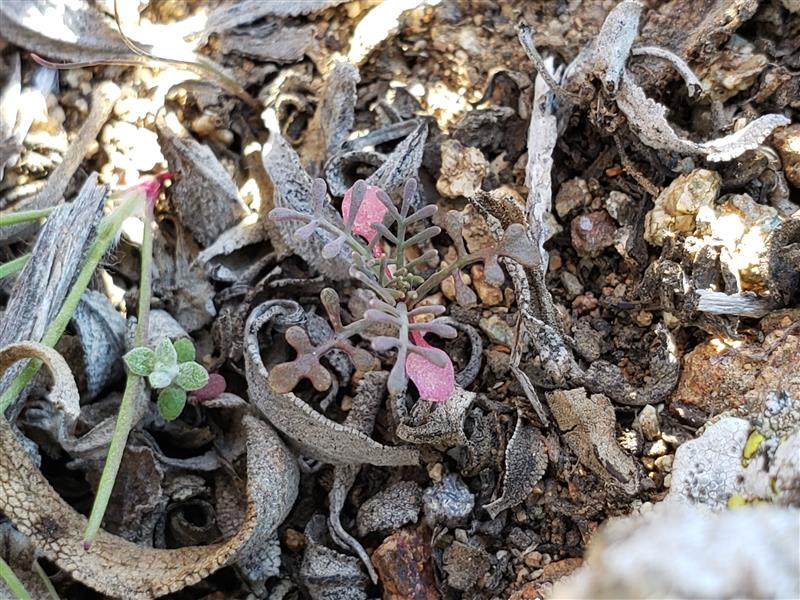Rare Plant Population Observed on Catalina
Conservation, NewsRare plant surveys allow for better understanding of the distribution and ecology of the species on the Island during their life cycle.

Sourced from: The Catalina Islander – February 16, 2023
By Jessica Boudevin and Kevin Alison
A team of Catalina Island Conservancy and partner botanists forayed into the field earlier this month to search for the very rare Santa Cruz Island rockcress (Sibara filifolia). The plant, federally listed as an endangered species, is very difficult to find, typically growing on dry south-facing slopes in coastal sage scrub habitats dominated by black sage (Salvia mellifera).
Surveys need to be done incredibly conscientiously.
“Due to its small statue, thin vegetation, and cryptic colored leaves – especially when its flowers are not present,” said Conservancy Rare Plant Ecologist Kevin Alison. “Because it is so inconspicuous, we need to be especially careful not to trample or disturb the species or habitat.”
Catalina Island Conservancy is part of a Sibara filifolia working group, a multi-organizational partnership invested in the survivorship of this species. This group includes government agencies, research institutions, and botanic gardens working toward plant conservation. On the most recent survey, the Conservancy hosted a group of expert botanists at from the Santa Barbara Botanic Garden to check previously known locations where Sibara filifolia was likely to occur.
“These collaborative partnerships are essential as this group can pool resources and expertise collectively toward achieving conservation goals of this endangered species,” added Alison. “This approach not only strengthens our ability to perform necessary data collection in the field, but also work together as a team to interpret that data to inform our management decisions.”
Each month from February to June, Conservancy and partner botanists will explore the slopes of Catalina observe how the plants are doing over time and look for new populations on the Island.
“These surveys will allow us to better understand the distribution and ecology of the species on the Island during their life cycle,” Alison said.
The Conservancy’s first survey was positive for the current populations of Sibara filifolia on Catalina. With these recent and consistent rains, we are seeing a great amount of germination of new seedlings around the remains of plants from the previous years. These elevated rain years leading to high germination rates are important events for the species to maintain healthy population sizes.
Though the Conservancy is optimistic based on initial survey results, it is still too early to tell if these findings will result in a sustainable population of Sibara fiifolia on Catalina Island.
“As seen in previous years, surveys, seasonal drought and other events likely cause considerable mortality,” added Alison. In order, to secure the species long term, the Conservancy will collect and bulk seeds from these plant populations in collaboration with their partners. “This will ensure a reliable source of plants are available to continue the propagation and conservation of this species.”

